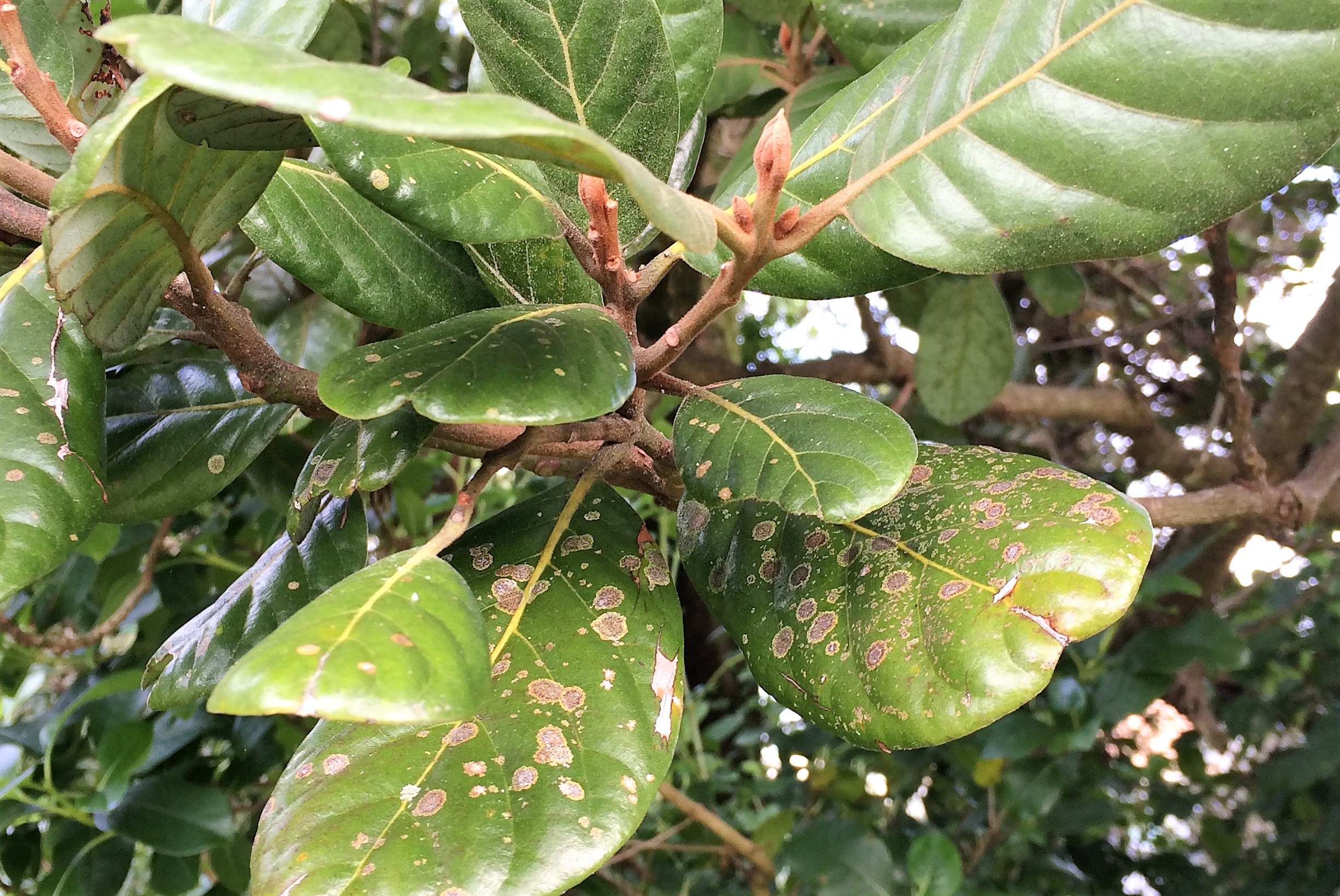To conserve species we need to reliably be able to identify them, understand their ecology, map their distributions, count their numbers and identify any threats to their survival. Unfortunately, some groups of species are very hard to tell apart, making reliable mapping of their populations difficult. An extreme version of this is the existence of cryptic species, where two independent lineages may be genetically different, but lack obvious morphological differences.
One possible example of this is being studied by Unitec student Marley Ford for his final year research project in his Bachelor of Applied Science in Biodiversity Management. He is studying one of the silver paint lichens – Strigula novae-zelandiae, an endemic species of lichen that lives mainly on the leaves of taraire (Beilschmiedia tarairi) trees in the upper North Island. Previous studies that have looked at taraire leaf samples of Strigula novae-zelandiae have suggested that two different morphological types could be present, possibly representing two different species. Marley is investigating if there are in fact two different species “hiding” under the one name. One morphotype starts as a rounded thallus and gets larger while the other morphotype starts as finger-like lobes which merge to form a rounded thallus.
As well as a traditional microscope study of the lichen in the Unitec herbarium, Marley has been extracting DNA, and using DNA barcoding to compare the different morphological types of this lichen from different locations. Results should be known by the end of November.
Contact
Marley Ford
Dr Dan Blanchon
dblanchon@unitec.ac.nz
Dr Peter de Lange
pdelange@unitec.ac.nz

Leave a Reply